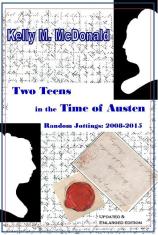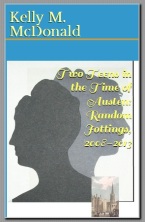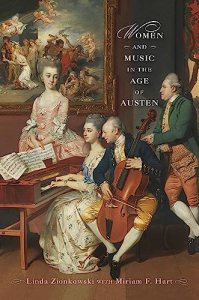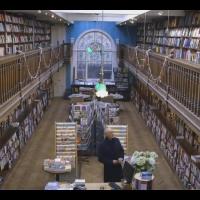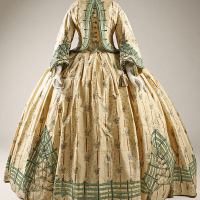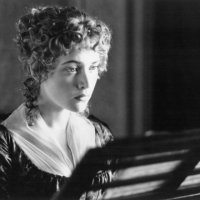Grinling Gibbons at Trinity College Chapel, Oxford
In the summer of 1814, Mary Gosling (one of my Two Teens) visited her two eldest brothers at Oxford University. On her last full day of touring the various buildings and quads, Mary and family visited Trinity College Chapel.
A fabulous online article from 2016, in the periodical OXFORD TODAY, covers the recent restoration of the chapel. Entitled, “Simply Divine: Trinity College Chapel is Restored to its Former Glory,” it showcases the Chapel’s artwork – including the very carvings by Grinling Gibbons which Mary wrote about seeing in her journal!
For me (and you, dear Reader) the thrill of SEEING and hearing about the Chapel is the next best thing to being there. According to the story by Olivia Gordon, the Chapel’s “dynamic integration of architecture, sculpture and painting is unrivalled among England’s surviving ecclesiastical interiors.” Studying the nineteenth century, with its sometimes harsh “upgrades,” it is heartwarming to read that the interior of the Chapel is now “brought back to glory with a sympathetic restoration“. The “glory” originated in 1694.

I also found, in reading this article, that perhaps Mary got it RIGHT when she wrote about the Chapel being “finely finished in CEDAR by Mr Gibbons.” I have long presumed this to have been a misidentification on her part, knowing that Gibbons (and the craftsmen, like Tilman Riemenschneider, whose work is seen on the Continent) worked with LIMEWOOD. However, four pieces, by Gibbons, of the Evangelists, ARE indeed in “Bermudan Cedar, a wood which is no longer available.” Restoration of the Evangelists actually came via old furniture made of the same antique wood!
Another interesting point made refers to the “hands-on” approach taken by the Chapel’s Chaplain, the Rev. Canon Dr. Emma Percy. She even scaled scaffolding, obtaining an up-close view of a ceiling piece, undergoing restoration.
I must admit, reading about the wife/widow of the founder (Sir Thomas Pope) and how she attended service brings to mind how the Salzburg Prince-Archbishops got from the Residenz to the Cathedral (it’s a “secret” you learn about when on a guided tour of the Residenz).
Re-dedication occurred at Easter-time, 23 April 2016; the embedded video (less than 4 minutes) will give you a taste of the gigantic task behind the year-long (April to April 2015-2016) project. It also pinpoints several of the different types of artwork that required refurbishment. More videos and further information about the renovation process and practices are found on the Chapel website. This page, commemorating the Conservation Awards, includes a link to a fabulous 20-page booklet (PDF) on the fully-restored Chapel. (Also accessed via their Renovation page).
Garden Tour – Christ Church College, Oxford
Poking around the Christ Church College, Oxford website, I came upon an announcement of their Seasonal Gardens Tour!
This is so evocative a thing to contemplate, even though I am 3000 miles away. The Goslings visited Oxford in the summer of 1814. Two of my diarist Mary Gosling‘s brothers were in college. Robert Gosling (the second-youngest brother) was actually attending Christ Church College, and the Goslings tramped all over the college grounds and into its quads and buildings. (Actually, they tramped about several of the colleges….)
My one time in Oxford, which had to be far quicker than I would have liked, my view of the gardens came through the college gates. So I wish I could transport myself over for the day and join those being shown around by the College’s head gardener.
It wasn’t until I really looked at the DATES that I realized the “Seasonal” wasn’t several dates over the blooms of spring or summer, but the Four Seasons of the year!
And the “Spring” date is coming up: on Thursday, April 26th (at 2 PM).
Other dates occur in July, October and January.
From their website:
“Take a seasonal tour of Christ Church’s beautiful private gardens and Meadow with our Head Gardener, John James. Learn about their history, conservation, current and future planting schemes and enjoy a few hours of peace and quiet away from the bustling city.
The tour lasts 1.5 hours and will take place in English. Entry to Christ Church is included in the ticket price [£15] so that you may visit the college and cathedral before or after your tour.”
The tours are booked online; see the Christ Church College website (link above, or click the photo). You would be walking in the historical footsteps of the very people who populate this research project.
James Edward Austen Leigh: His Oxford University Years
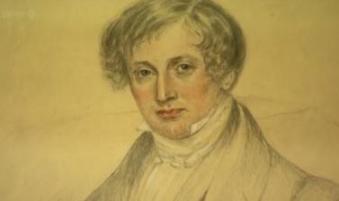 James Edward Austen was the only son of James Austen — eldest brother of Cassandra & Jane Austen; and the clergyman who said Sunday service (at Sherborne St John) for William & Eliza Chute of The Vyne.
James Edward Austen was the only son of James Austen — eldest brother of Cassandra & Jane Austen; and the clergyman who said Sunday service (at Sherborne St John) for William & Eliza Chute of The Vyne.
Edward, as he was known within the family, visited and dined with the Chutes as the years went by. And in 1828 he married my little Emma Smith — their wedding taking place on the 16th of December, the birthday of Edward’s dear Aunt Jane.
Coincidence?
I don’t know that I will ever be able to answer that question. Of interest, is Emma’s diary notations that she and Edward read Emma together in the days surrounding their engagement (September 16, which Emma calls “This day proved one of the most important in my life”). These days were the basis for my Persuasions article entitled “Edward Austen’s Emma reads Emma“.
This blog post, however, is about Edward rather than Emma. A fine biography looking at Edward’s Oxford University years by Chris Viveash, originally published in JAS Reports and reproduced in an updated but abridged essay. The future clergyman is caught here as a vivacious young man, complete with a circle of close friends, all of whom enjoyed hunting while doing the required coursework to gain their university degrees.
Universities Big and Bigger
 A Bodleian staff member responded to my recent query about the SKETCH BOOKS OF FANNY (SMITH) SEYMOUR! The response is mainly ‘we’re moving; even if that were not the case, we don’t have staff nor time…’.
A Bodleian staff member responded to my recent query about the SKETCH BOOKS OF FANNY (SMITH) SEYMOUR! The response is mainly ‘we’re moving; even if that were not the case, we don’t have staff nor time…’.
I was, however, encouraged (or I take it as encouragement…) to contact their Imaging Services. (I had asked about obtaining an image or two; I’m not in a position to pay for a lot of images, when there are diaries and letters I should be working with, instead of topographical drawings.)
I’m happy that my inquiry was not ignored. But, at the same time, would it take that much “time” to fetch one volume, flip through it, and describe it a bit? Size of book, number of drawings, that sort of think. I know; We are talking Oxford here, and the Bodleian is large.
I have had luck, in the past, to have gained the help of Prof. Jeremy Catto and Ariel College’s archivist Rob Petre in obtaining images of letters written by young Drummond Smith (Emma’s youngest brother), and copied out by one of the Smith sisters (I suspect Maria) [2013 Update: the handwriting is that of Fanny!]. Prof. Catto owns Drummond’s letter book, which was utilized in a history of Harrow — and that’s how I found out it existed. Talk about the ‘kindness of strangers’… I was and am grateful.*
So I will toss out this request: If anyone reading this post has ties to Oxford, lives nearby etc etc, can gain access to the library collection and has a half-hour to spare, please contact me (see Author page).
The main reason for this post, however, is to recognize someone who DID have time and take the time. She is Elizabeth Dunn, at Duke University, who responded to my initial query about Mary Gosling’s diary. I have remarked on this kindness elsewhere, but want to take the opportunity to reiterate how this project never would have gotten off the ground if I had been told ‘we have no time’. Instead, Elizabeth found the volume, found the entry I was most interested in (about the Ladies of Llangollen), described the diary and the other entries, and got the twenty or so pages xeroxed and sent to me. I met her in person some months later, when I traveled to Duke and transcribed the rest of the diary.
Months later, when I contacted Stanford University for information on holdings they have, my query got a response, but the proffered assistance was never actually acted upon (and I didn’t push it, having other avenues to pursue). Few realize just how important a drop of encouragement is to an “independent” scholar.
As my main hope had been to gain a view or two of Fanny’s books, if Imaging Services is willing and able, my curiosity might be assuaged. (To the tune of their minimum £15 charge!)
Drawing meant so much to Fanny, and (unlike many female amateur artists) she had an abiding desire to draw — even after her marriage. These sketches are dated c.1828-1838; Fanny married Richard in October 1834. Sophie du Pont, whose book I am just finishing, even Diana Sperling, pretty much gave up drawing after marriage. Lucky Bodleian for having these souvenirs of Fanny.
*I am also lucky in my friendship with author Charlotte Frost, who photographed these three albums!


